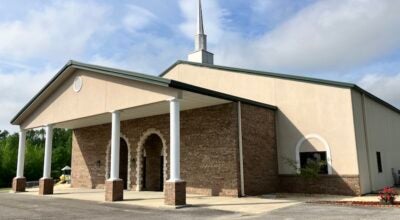Airport renovations getting off the ground
Published 11:17 am Tuesday, January 5, 2010
By Scott Mims
One of the state’s most endangered structures, the WPA hangar at the Chilton County Airport, is being renovated thanks to a group of local pilots.
The hangar, built in approximately 1935 as a project of the Works Progress Administration, is one of the last of its kind in Alabama and is listed on the National Register of Historic Places. In December, the Chilton County Airport Authority developed a three-year lease agreement with a group of pilots who decided to invest in the building’s restoration.
“If you ask people in the community, a lot of people have fond memories of that structure,” CCAA member Billy Singleton said.
The building has served multiple functions since its construction, most notably as the county shop from 1950 until recently.
In severe need of rehabilitation, it was named the most endangered structure in Alabama in 2007.
Although CCAA has wanted to see the old hangar rebuilt, the majority of airport funding has gone toward land acquisition in hope of removing obstacles in the flight path of aircraft. Thus, the renovations were put on hold — until now.
Local pilots Andy Roberson, Alan Dykes, Craig Cleckler and Mark Underwood wanted to revive the structure not only for its historical preservation but also to make it a functioning hangar again.
“We just kept looking across the field and seeing a hangar that needed to be rehabilitated,” Roberson said. We didn’t want to lose that old structure.”
As they discussed the group’s intentions, members of the CCAA began to see the hangar in a new light — as an opportunity to provide more space for pilots, and as a generator of revenue.
Singleton said the airport already has a lengthy waiting list for people who want to base aircraft there. Currently, 30 pieces of aircraft are based at the Chilton County Airport.
“This seemed to be the most practical solution,” he said.
Rotting wood in the roof was torn out and replaced with a new frame. The same was done for the back wall. The next step will be to replace the metal on the roof.
“Honestly, all we got was two brick walls,” Roberson said.
The power shed, which sits on the east side of the hangar, will also be renovated strictly for aesthetic purposes. The shed was once used to power the rotating beacon, which is powered by electricity today.
The hangar and shed make up a big portion of the Gragg Field Historic District, which also includes the large Tuskegee Hangar transported to the site from Tuskegee Army Airfield in 1948.
The site was an emergency landing field on Commercial Airmail Route 40 (Site 27) between Memphis and Tampa, Fla.
“The history here is just incredible when you get into it,” Roberson said.
The renovation is expected to be complete within three months. The estimated cost of the project has not been determined.






